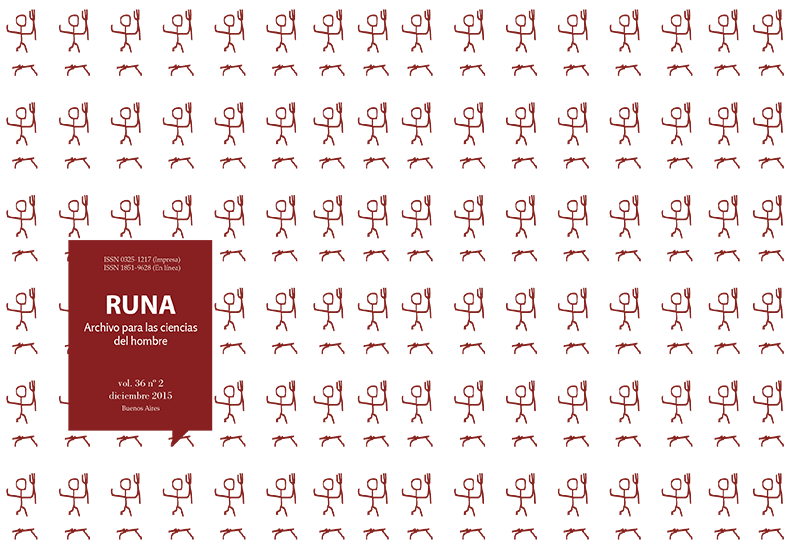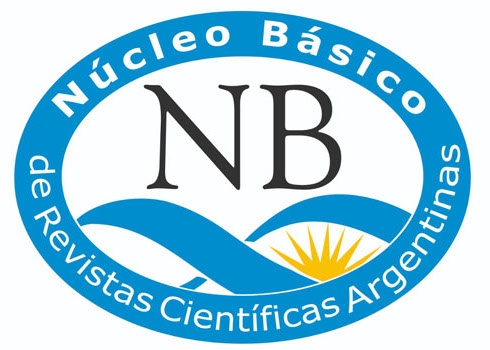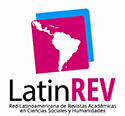A return to the ‘pretty house’. An interpretative bricolage of documentary sources on menarche rituals among the native peoples of the Argentine Patagonia (nineteenth and twentieth centuries)
Abstract
The main aim of this work is to put into consideration a new analysis of the text by the British author George Musters, of his description of a menarche ceremony (which he called “the pretty house”) that was observed among the Tehuelches from the Patagonia in 1869, in order to contextualize it from the historic point of view and from a gender perspective.From qualitative methodology we have made a bricolage which expresses an itinerary articulated by a genealogy of documentary sources from the nineteenth century, by testimonies produced in anthropological and linguistic works in the second half of the twentieth century, and by ethnographic records of our works in oral history which focus on rituals to foster the yarns.The comparison of sources of the selected documents leads us to think about the hypothesis that in the ceremonies of the first menstruation, from the nineteenth century on, it was fostered the attachment to yarns and fabric, in societies which also ritualized the field of textile work.Downloads
References
AGUERRE, Ana María. 2000. Las Vidas de Paty en la toldería Tehuelche del Río Pinturas y el después. Buenos Aires: Oficina de Publicaciones de la Facultad de Filosofía y Letras. UBA.
AVENDAÑO, Santiago. 2000. Usos y costumbres de los indios de La Pampa, (Recopilación del P. Meirando Hux). Segunda Parte de las Memorias del ex cautivo Santiago Avendaño. Buenos Aires: Elefante Blanco.
BACIGALUPO, Ana Mariella. 2002. “La lucha por la masculinidad de machi: políticas coloniales de género. Sexualidad y poder en el sur de Chile”.Revista de Historia Indígena, 6: 29-64
BIDASECA, Karina. 2010. Perturbando el texto colonial. Los estudios (Pos) coloniales en América Latina, Buenos Aires: Editorial S B
BOURDIEU, Pierre. 1985. ¿Qué significa hablar?.Economía de los intercambios lingüísticos, Madrid: Akal.
BOURDIEU, Pierre. 2000. La dominación masculina, Barcelona: Anagrama
BRIONES, Claudia. 1998, La alteridad del “Cuarto Mundo”. Una deconstrucción antropológica de la diferencia. Buenos Aires: Ediciones del Sol.
BUCKLEY, Thomas y GOTTLIEB, Alma.1988, Blood Magic The Anthropology of Menstruation. Berkeley: University of California Press.
CASAMIQUELA, Rodolfo. 1988. En pos del Gualicho Buenos Aires: Eudeba
COX, Guillermo. Viaje a las regiones septentrionales de la Patagonia1862-186 Santiago de Chile: Imprenta Nacional
DE BEAUVOIR, Simone 1981. El segundo sexo. Los hechos y los mitos., Buenos Aires: Siglo Veinte.
De la CRUZ, Luis. 1969. "Viaje desde el Fuerte Ballemar hasta Buenos Aires en: Pedro de Angelis". En: Colección de obras y documentos, Tomo II. Buenos Aires: Plus Ultra. pp. 1-492
DENZIN, Norman & LINCOLN, Yvonna. 2005. The Sage Handbook of Qualitative Research. California: Thousand Oaks. Sage Publications

Runa, archivos para las ciencias is a publication of the Instituto de Ciencias Antropológicas, Facultad de Filosofía y Letras, Universidad de Buenos Aires and is distributed under a Creative Commons Attribution 4.0 International License.
Runa maintains its commitment to the policies of Open Access to scientific information, considering that both scientific publications and publicly funded research should circulate on the Internet freely, free of charge and without restrictions.
The contents and opinions expressed in published articles are the sole responsibility of their authors.



















